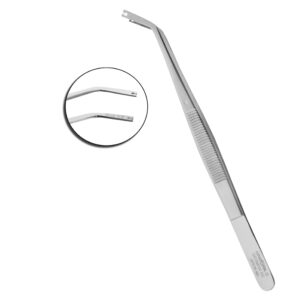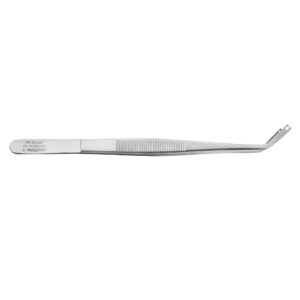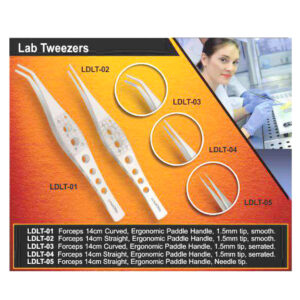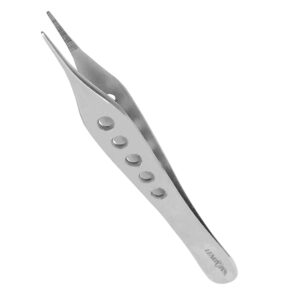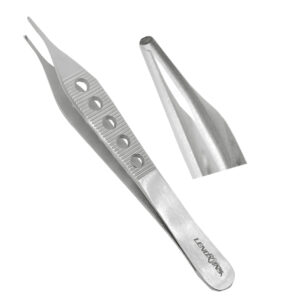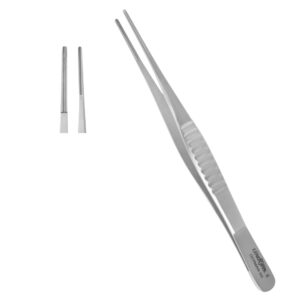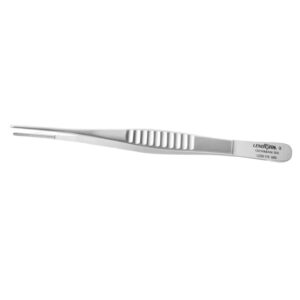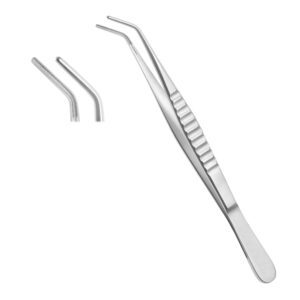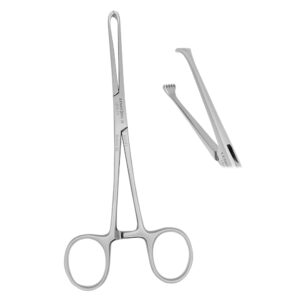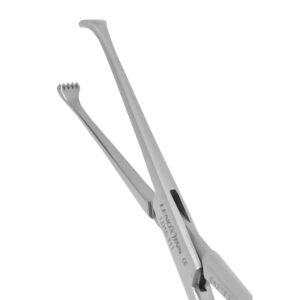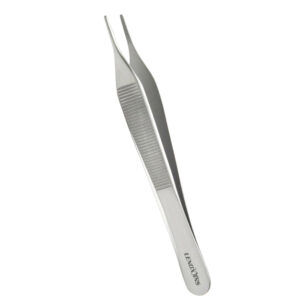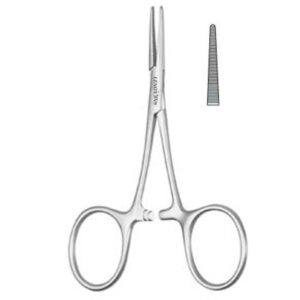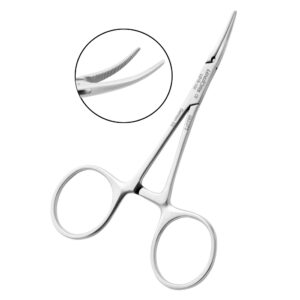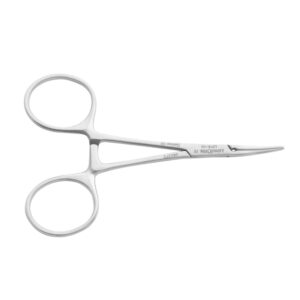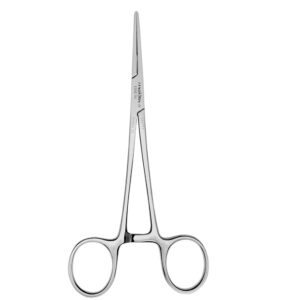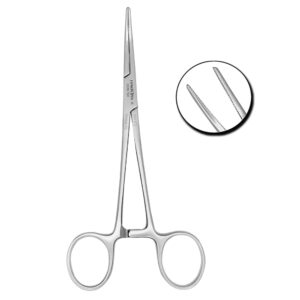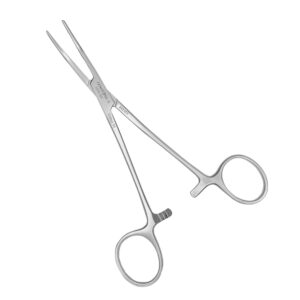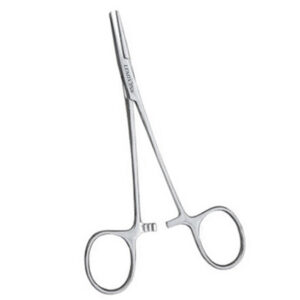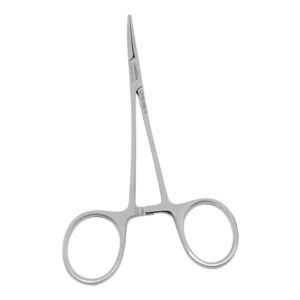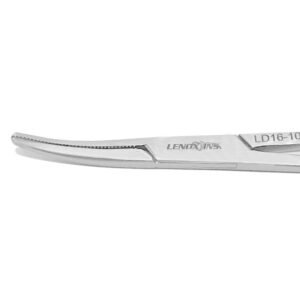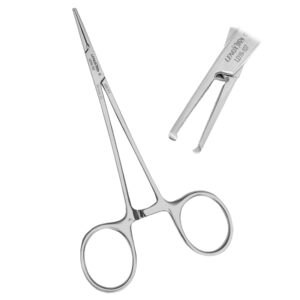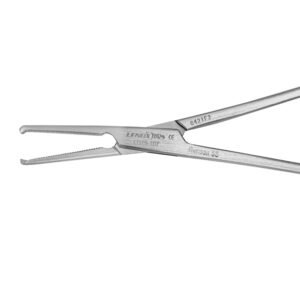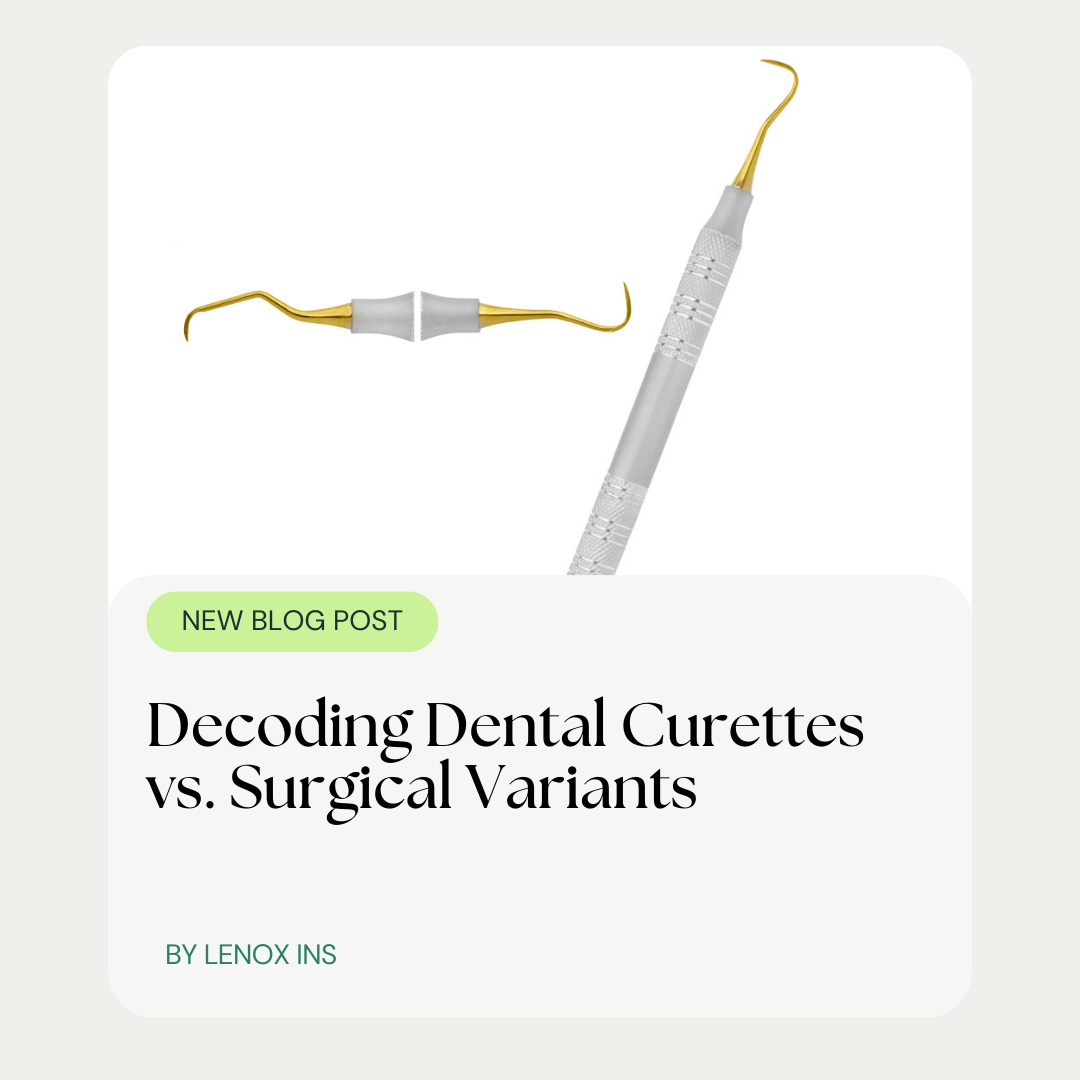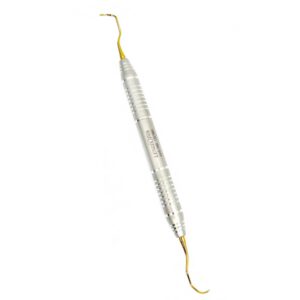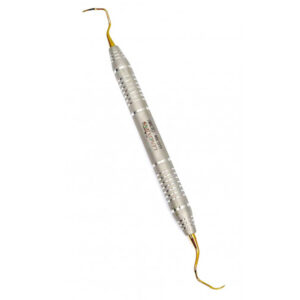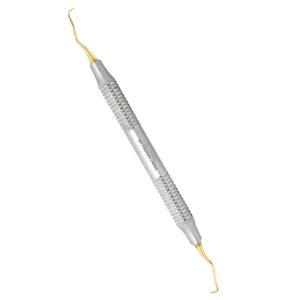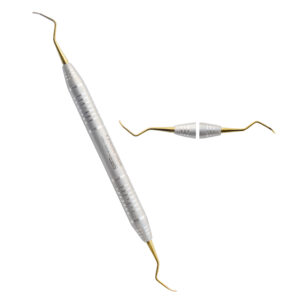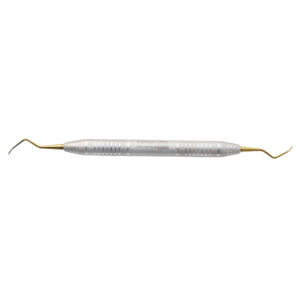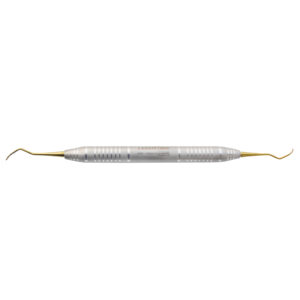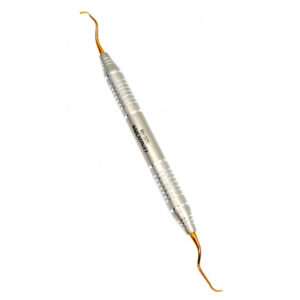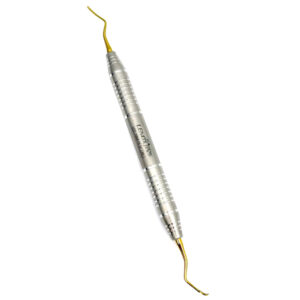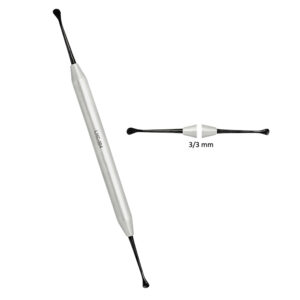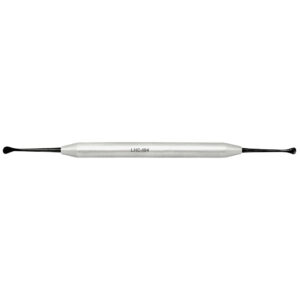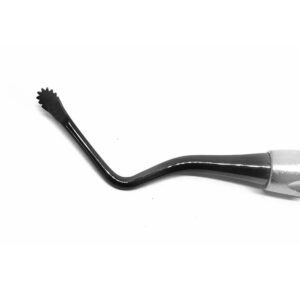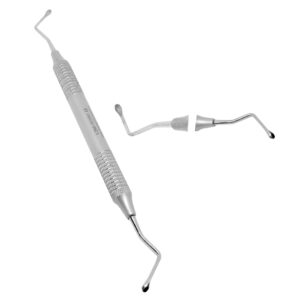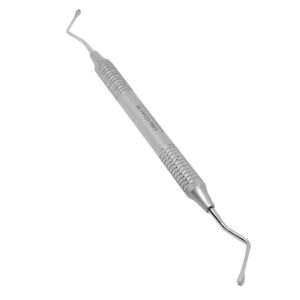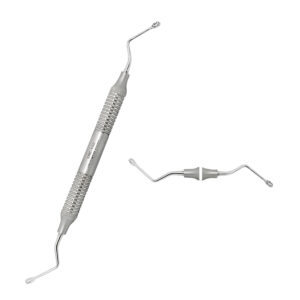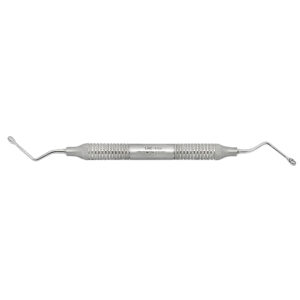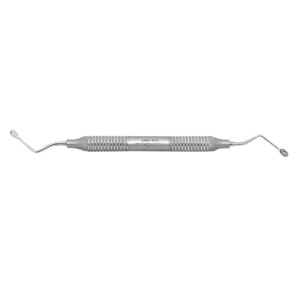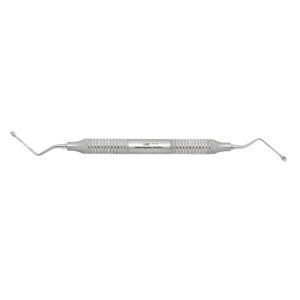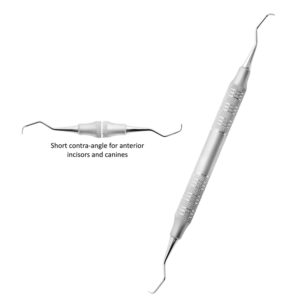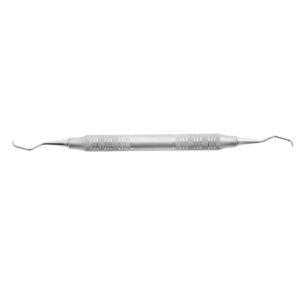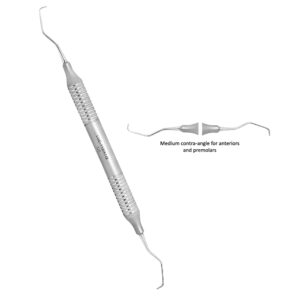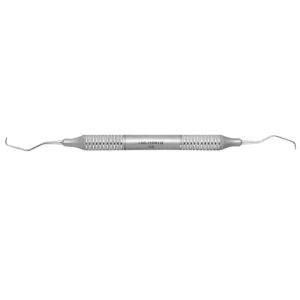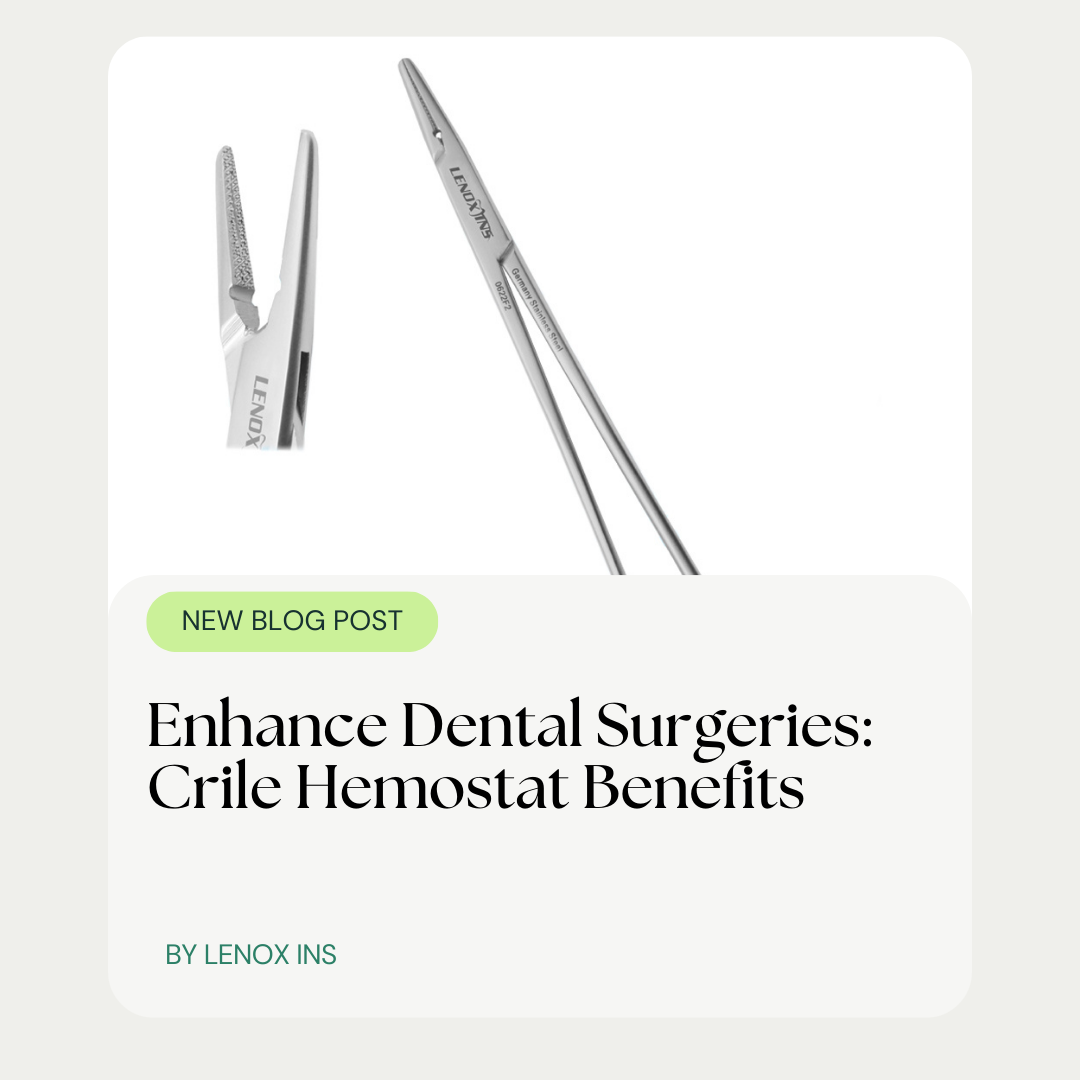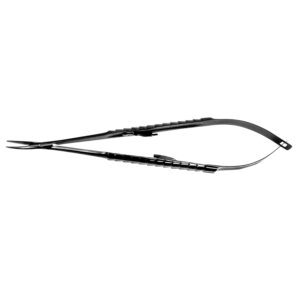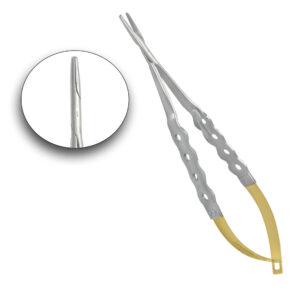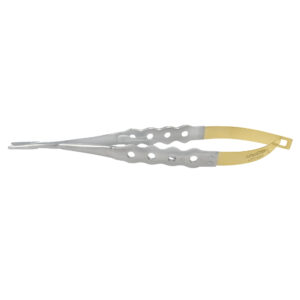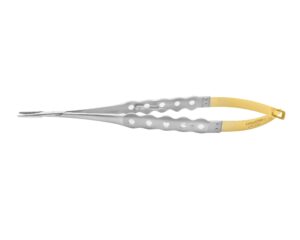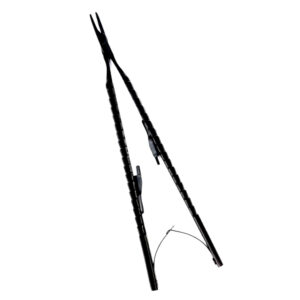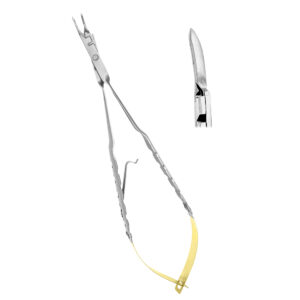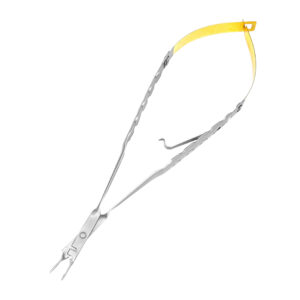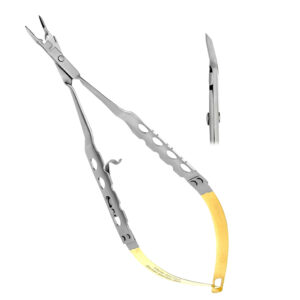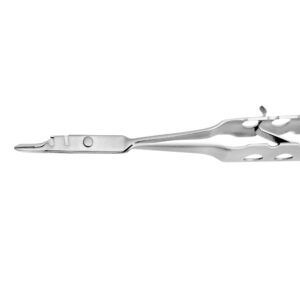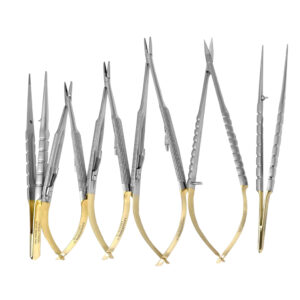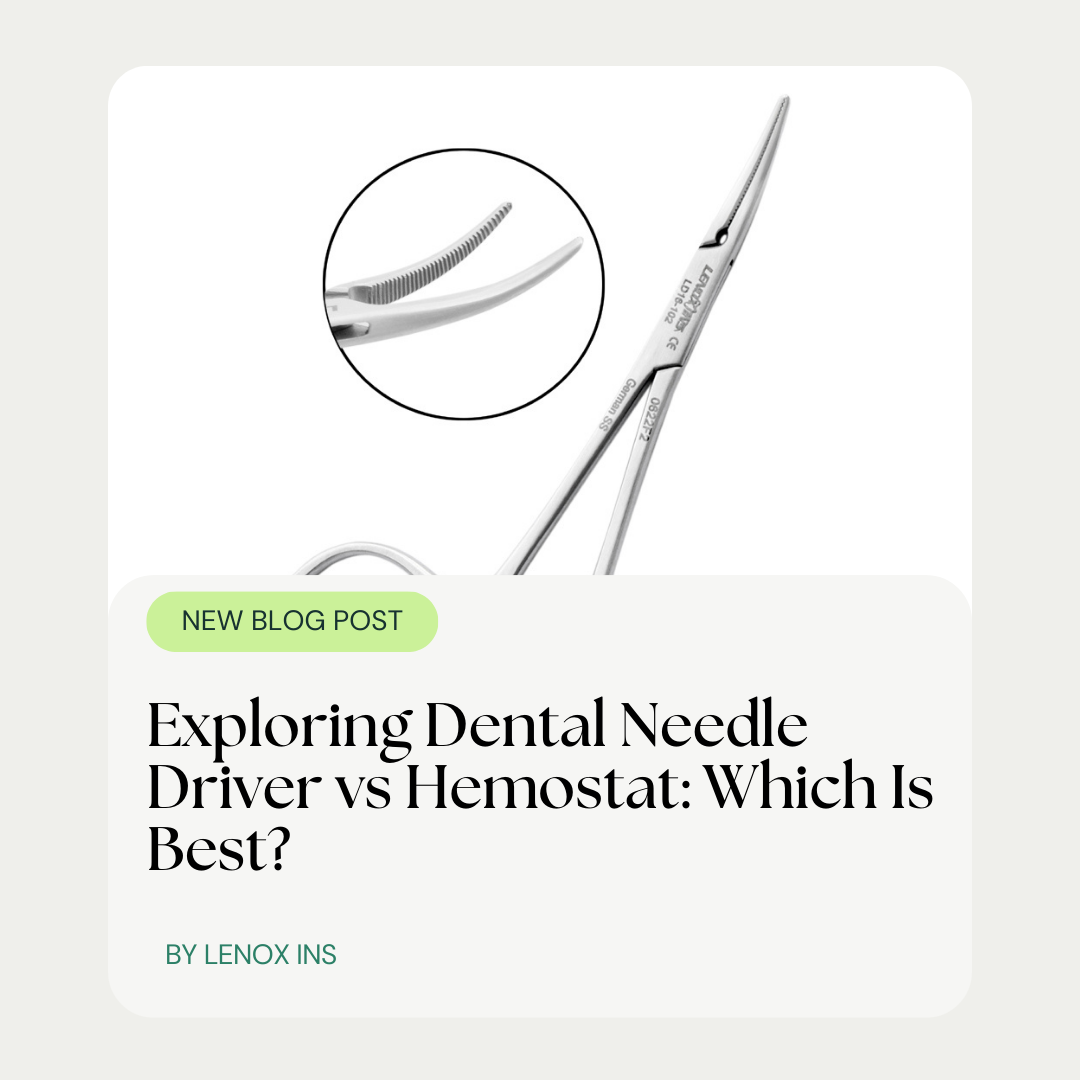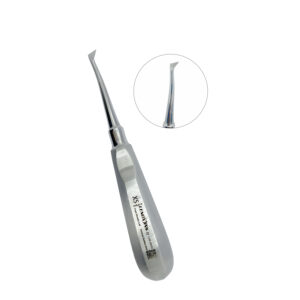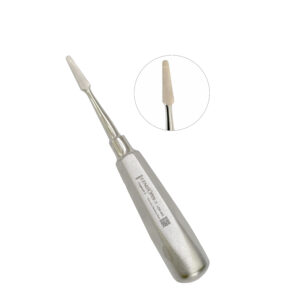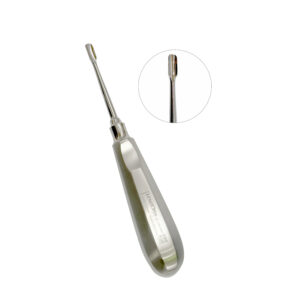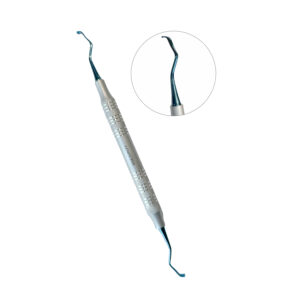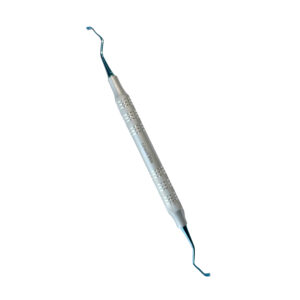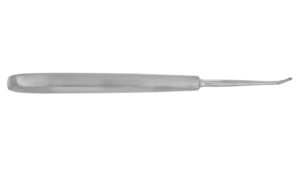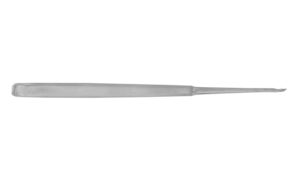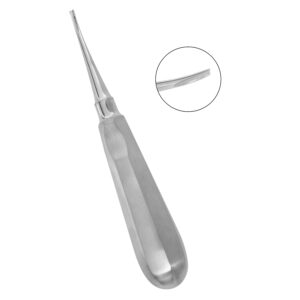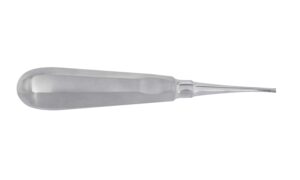Understanding Adson Brown Tissue Forceps: A Comprehensive Guide
- Posted December 5, 2024
- by lenoxinstro
Are you struggling to find the right tools for delicate tissue handling in your dental practice? Adson Brown tissue forceps are essential instruments designed for precision and control. In this guide, I will explain their design and functionality, proper usage techniques, and maintenance tips. By understanding these aspects, you will enhance your skills in tissue manipulation, ultimately improving patient outcomes and efficiency in your procedures. Let’s address the common challenges you face with tissue handling and explore how the right forceps can make a significant difference in your practice.
Introduction to Adson Brown Tissue Forceps
Adson Brown tissue forceps play a crucial role in surgical procedures, particularly in delicate operations involving tissues such as the ovary. These instruments are designed with specific features that enhance their functionality, ensuring precision and hygiene during use. I will also explore the historical development of these forceps, highlighting their evolution and significance in modern surgical equipment. Adson tissue forceps
Understanding the Role of Tissue Forceps in Surgery
Tissue forceps, such as the Adson Brown variety, are essential tools in surgical settings, particularly when handling delicate tissues. Their design allows for a secure grip without causing damage, which is crucial during procedures that require precision, such as those involving staining or manipulating tissue samples in a laboratory environment. In my experience, using the right forceps can significantly impact the outcome of research involving genome analysis, as it ensures that samples remain intact and uncontaminated.
| Feature | Importance |
|---|---|
| Precision Grip | Minimizes tissue damage during procedures |
| Lightweight Design | Enhances maneuverability and control |
| Hygienic Materials | Ensures safety and reduces contamination risks |
| Versatility | Applicable in various surgical and laboratory settings |
Key Features of Adson Brown Tissue Forceps
The Adson Brown tissue forceps are distinguished by their unique design, which includes a precision grip that allows for careful handling of delicate tissues. This feature is particularly important when working with samples for genotype analysis, where maintaining tissue integrity is essential. Additionally, the lightweight construction of these forceps enhances maneuverability, making them a preferred choice in both surgical and laboratory settings.
- Precision grip for careful handling of delicate tissues
- Lightweight design for enhanced maneuverability
- Versatile application in surgical and laboratory environments
- Hygienic materials to reduce contamination risks
Historical Development and Evolution
The historical development of Adson Brown tissue forceps reflects significant advancements in surgical tools, particularly in fields like plastic surgery and microscopy. Originally designed to handle delicate facial tissue, these forceps have evolved to meet the demands of modern surgical practices, including hormone-related procedures and tissue culture applications. My experience in the operating room has shown me how these instruments have become indispensable for ensuring precision and safety during intricate surgeries, ultimately enhancing patient outcomes.
Design and Functionality Explained
The design of Adson Brown tissue forceps is tailored for precision in handling various tissues, making them invaluable in histology and molecular biology applications. I will discuss how their unique features enhance surgical accuracy, particularly in procedures like polymerase chain reaction. Additionally, I will compare Adson Brown forceps to other tissue forceps, highlighting their advantages in clinical settings.
Detailed Overview of the Instrument’s Design
The design of Adson Brown tissue forceps is specifically tailored for precision in surgical settings, particularly in pathology and organ handling. Their fine tips allow for a secure grip on delicate tissues, which is essential during surgery to minimize damage and ensure accurate manipulation. In my experience, using these forceps alongside a clean paper towel for tissue placement can significantly enhance the efficiency of procedures, as it helps maintain a sterile environment while providing the necessary control over the samples being examined.
Product Collection
-
Corn Suture Forceps 15cm – Precision Dental Surgical Instrument
Rated 0 out of 5CA$40Explore the Corn Suture Forceps 15cm by Lenox Instruments, crafted with finely serrated tips for precision in suture handling and placement. Trusted by dental professionals in Canada, USA, UK, Australia, and Europe. -
Histology Forceps Set – Precision Laboratory Instruments
Rated 0 out of 5CA$100Explore the Histology Forceps Set by Lenox Instruments, crafted with surgical stainless steel for precision in histological procedures. Trusted by laboratory professionals in Canada, USA, UK, Australia, and Europe. -
Adson Forceps 12cm Ergonomic Handle – Precision Dental Surgical Instrument
Rated 0 out of 5CA$25Explore the Adson Forceps 12cm Ergonomic Handle by Lenox Instruments, crafted with finely serrated tips for precision in tissue handling. Trusted by dental professionals in Canada, USA, UK, Australia, and Europe. -
Adson Tissue Forceps 12cm 1×2 Teeth Ergonomic Handle – Precision Dental Surgical Instrument
Rated 0 out of 5CA$25Explore the Adson Tissue Forceps 12cm 1x2 Teeth Ergonomic Handle by Lenox Instruments, crafted from surgical stainless steel for precision in tissue handling. Trusted by dental professionals in Canada, USA, UK, Australia, and Europe. -
Debakey Atraumatic Tissue Forceps Str 16cm – Precision Surgical Instrument
Rated 0 out of 5CA$60Explore the Debakey Atraumatic Tissue Forceps Str 16cm by Lenox Instruments, crafted with atraumatic serrated tips for precision in delicate tissue handling. Trusted by surgical professionals in Canada, USA, UK, Australia, and Europe. -
Debakey Atraumatic Tissue Forceps Cvd 16cm – Precision Surgical Instrument
Rated 0 out of 5CA$60Explore the Debakey Atraumatic Tissue Forceps Cvd 16cm by Lenox Instruments, crafted with atraumatic serrated tips for precision in delicate tissue handling. Trusted by surgical professionals in Canada, USA, UK, Australia, and Europe. -
Allis Tissue Forceps 15cm – Precision Dental Surgical Instrument
Rated 0 out of 5CA$70Explore the Allis Tissue Forceps 15cm by Lenox Instruments, crafted with toothed jaws and a ratcheted handle for precision in tissue handling. Trusted by dental professionals in Canada, USA, UK, Australia, and Europe. -
Adson Forceps 12cm – Precision Surgical Instrument
Rated 0 out of 5CA$25Explore the Adson Forceps 12cm by Lenox Instruments, crafted with finely serrated tips for precision in tissue handling. Trusted by surgical professionals in Canada, USA, UK, Australia, and Europe.
How the Design Enhances Surgical Precision
The design of Adson Brown tissue forceps significantly enhances surgical precision through its fine tips and ergonomic structure. In my experience, the precision grip allows for careful manipulation of delicate tissues, which is crucial during intricate procedures. This level of control not only minimizes the risk of tissue damage but also ensures that the surgical outcome is as intended, making these forceps an essential tool in both surgical and laboratory environments.
Comparing Adson Brown to Other Tissue Forceps
When comparing Adson Brown tissue forceps to other types of tissue forceps, I find that their unique design offers distinct advantages in precision and control. For instance, while standard tissue forceps may have broader tips, the fine tips of Adson Brown tissue forceps allow for a more delicate grip, which is essential in surgeries involving sensitive tissues. This precision is particularly beneficial in procedures like suturing or tissue manipulation, where maintaining tissue integrity is paramount.
| Feature | Adson Brown Forceps | Other Tissue Forceps |
|---|---|---|
| Tip Design | Fine tips for delicate handling | Broader tips for general use |
| Grip Precision | High precision for intricate procedures | Moderate precision |
| Weight | Lightweight for enhanced maneuverability | Varies, often heavier |
| Application | Ideal for surgical and laboratory settings | General surgical applications |
Choosing the Right Tissue Forceps for Your Needs
When selecting tissue forceps, several factors come into play, including the specific procedure and the type of tissue being handled. I will discuss the benefits of Adson Brown forceps, which excel in various surgical and laboratory applications. Additionally, I will provide tips to help you make an informed decision, ensuring you choose the right instrument for your needs.
Factors to Consider When Selecting Tissue Forceps
When selecting tissue forceps, I consider several key factors to ensure I choose the right instrument for the specific procedure at hand. The type of tissue being handled is crucial; for delicate tissues, I prefer Adson Brown forceps due to their fine tips that provide a secure grip without causing damage. Additionally, I evaluate the weight and ergonomics of the forceps, as a lightweight design enhances maneuverability, allowing for greater control during intricate surgical tasks.
Benefits of Adson Brown Forceps in Various Procedures
The Adson Brown forceps offer significant advantages in various surgical and laboratory procedures due to their precision and lightweight design. In my experience, these forceps excel in delicate operations, such as suturing or tissue manipulation, where maintaining tissue integrity is critical. Their fine tips allow for a secure grip, minimizing the risk of damage while enhancing control, which ultimately leads to better patient outcomes and more reliable results in laboratory settings.
Tips for Making an Informed Decision
When selecting the right tissue forceps, I recommend considering the specific requirements of your procedures. Evaluate the type of tissue you will be handling; for delicate tissues, Adson tissue forceps are often the best choice due to their fine tips that provide a secure grip without causing damage. Additionally, think about the ergonomics and weight of the forceps, as a lightweight design can enhance your control and precision during intricate tasks.
- Assess the type of tissue being handled.
- Choose Adson Brown forceps for delicate procedures.
- Consider the ergonomics and weight for better control.
Proper Usage Techniques
Proper Usage Techniques
To maximize the effectiveness of Adson Brown tissue forceps, I will provide a step-by-step guide to handling these instruments correctly. I will also highlight common mistakes to avoid during use, ensuring that you maintain precision and control. By applying the correct techniques, you can enhance surgical outcomes and ensure the integrity of delicate tissues throughout your procedures.
Step-by-Step Guide to Handling the Forceps
To effectively handle Adson Brown tissue forceps, I recommend starting by ensuring that your hands are clean and dry to maintain hygiene and prevent contamination. Grip the forceps firmly but gently, using the thumb and index finger to control the tips, allowing for precise manipulation of delicate tissues. During procedures, I find it helpful to maintain a steady hand and to use the forceps in a controlled manner, avoiding any sudden movements that could damage the tissue or compromise the surgical outcome.
Common Mistakes to Avoid During Use
One common mistake I often see when using Adson Brown tissue forceps is applying excessive pressure while gripping delicate tissues. This can lead to tissue damage, which compromises the integrity of the samples or the surgical site. It’s essential to maintain a gentle yet firm grip, allowing the fine tips of the forceps to do the work without crushing or tearing the tissue, ensuring optimal outcomes in both surgical and laboratory settings.
Enhancing Surgical Outcomes With Correct Techniques
To enhance surgical outcomes with Adson Brown tissue forceps, I emphasize the importance of mastering proper handling techniques. A steady grip and controlled movements are essential to prevent tissue damage during delicate procedures. By focusing on these techniques, I have consistently observed improved precision and better patient results, particularly in surgeries that require meticulous tissue manipulation.
| Technique | Description |
|---|---|
| Steady Grip | Maintain a firm yet gentle hold to avoid crushing delicate tissues. |
| Controlled Movements | Use slow, deliberate motions to enhance precision during manipulation. |
| Regular Practice | Frequent use of the forceps in various procedures builds confidence and skill. |
| Hygiene Maintenance | Ensure hands and instruments are clean to prevent contamination. |
Maintenance and Care Guidelines
Proper maintenance and care of Adson Brown tissue forceps are essential for ensuring their longevity and effectiveness. I will cover cleaning procedures for sterilization, which are crucial for preventing contamination. Additionally, I will discuss storage practices that help extend the instrument’s lifespan and the importance of regularly inspecting for wear and damage to maintain optimal performance.
Cleaning Procedures for Sterilization
To ensure the longevity and effectiveness of Adson Brown tissue forceps, I prioritize thorough cleaning procedures for sterilization. After each use, I carefully wash the forceps with warm, soapy water to remove any biological material, followed by rinsing them under running water. I then sterilize the instruments using an autoclave, which effectively eliminates any remaining contaminants, ensuring that they are safe for future surgical or laboratory applications.
Product Collection
-
Corn Suture Forceps 15cm – Precision Dental Surgical Instrument
Rated 0 out of 5CA$40Explore the Corn Suture Forceps 15cm by Lenox Instruments, crafted with finely serrated tips for precision in suture handling and placement. Trusted by dental professionals in Canada, USA, UK, Australia, and Europe. -
Histology Forceps Set – Precision Laboratory Instruments
Rated 0 out of 5CA$100Explore the Histology Forceps Set by Lenox Instruments, crafted with surgical stainless steel for precision in histological procedures. Trusted by laboratory professionals in Canada, USA, UK, Australia, and Europe. -
Adson Forceps 12cm Ergonomic Handle – Precision Dental Surgical Instrument
Rated 0 out of 5CA$25Explore the Adson Forceps 12cm Ergonomic Handle by Lenox Instruments, crafted with finely serrated tips for precision in tissue handling. Trusted by dental professionals in Canada, USA, UK, Australia, and Europe. -
Adson Tissue Forceps 12cm 1×2 Teeth Ergonomic Handle – Precision Dental Surgical Instrument
Rated 0 out of 5CA$25Explore the Adson Tissue Forceps 12cm 1x2 Teeth Ergonomic Handle by Lenox Instruments, crafted from surgical stainless steel for precision in tissue handling. Trusted by dental professionals in Canada, USA, UK, Australia, and Europe. -
Debakey Atraumatic Tissue Forceps Str 16cm – Precision Surgical Instrument
Rated 0 out of 5CA$60Explore the Debakey Atraumatic Tissue Forceps Str 16cm by Lenox Instruments, crafted with atraumatic serrated tips for precision in delicate tissue handling. Trusted by surgical professionals in Canada, USA, UK, Australia, and Europe. -
Debakey Atraumatic Tissue Forceps Cvd 16cm – Precision Surgical Instrument
Rated 0 out of 5CA$60Explore the Debakey Atraumatic Tissue Forceps Cvd 16cm by Lenox Instruments, crafted with atraumatic serrated tips for precision in delicate tissue handling. Trusted by surgical professionals in Canada, USA, UK, Australia, and Europe. -
Allis Tissue Forceps 15cm – Precision Dental Surgical Instrument
Rated 0 out of 5CA$70Explore the Allis Tissue Forceps 15cm by Lenox Instruments, crafted with toothed jaws and a ratcheted handle for precision in tissue handling. Trusted by dental professionals in Canada, USA, UK, Australia, and Europe. -
Adson Forceps 12cm – Precision Surgical Instrument
Rated 0 out of 5CA$25Explore the Adson Forceps 12cm by Lenox Instruments, crafted with finely serrated tips for precision in tissue handling. Trusted by surgical professionals in Canada, USA, UK, Australia, and Europe.
Storage Practices to Extend Instrument Longevity
To extend the longevity of Adson Brown tissue forceps, I recommend implementing proper storage practices. After cleaning and sterilization, I always store the forceps in a designated, dry area, preferably in a protective case or tray to prevent any accidental damage. Keeping them organized and away from other instruments reduces the risk of scratches or misalignment, ensuring they remain in optimal condition for future use: Adson Brown tissue forceps
- Store in a dry, designated area.
- Use a protective case or tray.
- Avoid contact with other instruments to prevent damage.
Inspecting for Wear and Damage
Regularly inspecting Adson Brown tissue forceps for wear and damage is essential to ensure their effectiveness and safety during procedures. I make it a practice to closely examine the tips and gripping surfaces for any signs of bending, dullness, or corrosion, as these issues can compromise precision and lead to tissue damage. By maintaining a routine inspection schedule, I can identify potential problems early, allowing for timely repairs or replacements, which ultimately enhances the reliability of these critical surgical instruments.
Real-World Applications and Case Examples
Real-World Applications and Case Examples
In my experience, Adson Brown tissue forceps have proven invaluable across various medical fields. I will share success stories from surgical professionals who have effectively utilized these instruments, highlighting their adaptability in different specialties. Additionally, I will address common challenges faced during procedures and present practical solutions that enhance the overall effectiveness of these forceps.
Success Stories From Surgical Professionals
In my experience, I have witnessed numerous surgical professionals achieve remarkable outcomes using Adson Brown tissue forceps. For instance, a colleague shared how these forceps were instrumental during a complex reconstructive surgery, allowing for precise manipulation of delicate facial tissues without causing trauma. Such success stories highlight the importance of selecting the right instruments, as the precision and control offered by Adson Brown tissue forceps can significantly enhance surgical results and improve patient satisfaction.
Adaptations in Different Medical Fields
In my experience, Adson Brown tissue forceps have found diverse applications across various medical fields, showcasing their versatility and effectiveness. For instance, in plastic surgery, these forceps are essential for handling delicate facial tissues during reconstructive procedures, allowing surgeons to achieve precise results while minimizing trauma. Similarly, in gynecology, I have seen these forceps used effectively during ovarian surgeries, where their fine tips enable careful manipulation of sensitive tissues, ultimately enhancing patient outcomes and satisfaction.
Addressing Challenges With Practical Solutions
In my experience, one of the common challenges faced when using Adson Brown tissue forceps is the potential for tissue damage due to improper handling. To address this, I emphasize the importance of training and practice in mastering the correct grip and movement techniques. By focusing on maintaining a steady hand and using controlled motions, I have found that surgical outcomes improve significantly, allowing for precise manipulation of delicate tissues while minimizing the risk of trauma.
Conclusion
Understanding Adson Brown tissue forceps is essential for achieving precision and safety in surgical and laboratory procedures. Their unique design, featuring fine tips and a lightweight structure, allows for careful handling of delicate tissues, minimizing damage and enhancing outcomes. Proper usage techniques and maintenance practices further ensure their effectiveness and longevity. By selecting the right instruments and mastering their application, healthcare professionals can significantly improve patient care and research results.


